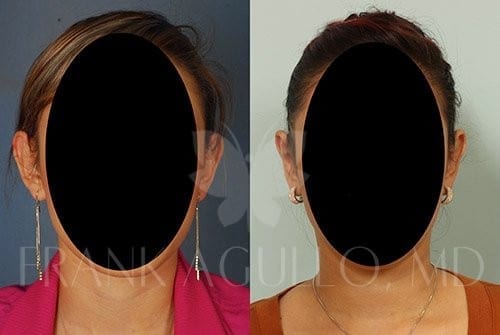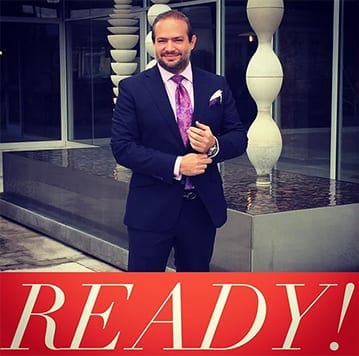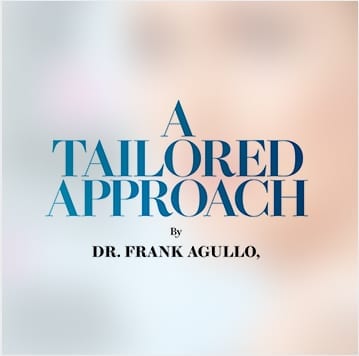If your ears are unequal or unbalanced, Otoplasty surgery can help correct and adjust your ear shape and position. Feel confident in your appearance and schedule a consultation today.
Ear Surgery / Otoplasty
Ear surgery can correct minor deformities that make you dissatisfied with your appearance. If you have protruding, overly large ears or a condition known as macrotia, or even lopsided / disfigured ears, this can greatly affect your self-esteem. Otoplasty is another name for ear surgery and can be done to help you achieve balance, proportion, shape, and correction to misshapen ears. Whether having irregular ears is something you were born with or the result of an injury, hiding behind your ears can be corrected, and without affecting your hearing in any way.
Both kids and adults can be candidates for ear surgery. Those kids who are often ridiculed or bullied at school and called names might be wondering what can be done to fix their ears. As long as the children are healthy and not prone to chronic ear infections, at least five years old and are cooperative, able to communicate well and not objective to surgery, they might be able to undergo the otoplasty procedure.
Preteens, teenagers, and adults must be healthy and not have any life-threatening medical conditions or illnesses. However, ear surgery is highly personal and not something that should be done just because a parent, friend, relative or outside influence thinks your ears look funny or too big. It is something you should only do for yourself and not to fit into any mold that society brings upon us.
Dr. Frank Agullo specializes in all types of facial cosmetic procedures in El Paso, including otoplasty. He is double board certified in both Plastic Surgery and General Surgery and recognized as a leading “Superdoctor” in Texas to give his patients peace of mind for the ultimate experience.
Otoplasty Techniques
In the world of plastic surgery, there are two specific techniques that are known to be used for ear corrective procedures. One is the incisionless otoplasty, whereas the other method is often called “traditional” otoplasty. The latter is the one primarily used by board-certified plastic surgeons. Incisionless otoplasty might be preferable for young patients; however, the results are thought to be not as long lasting as traditional ear surgery. It is less invasive, making it better for children and especially those whose parents might not be ready to give permission to put their children through all of the risks associated with having surgery, like anesthesia.
Traditional Otoplasty:
Most reputable plastic surgeons use this method of ear surgery, which entails making a hidden incision in the posterior part of the ear. This is also referred to as an “open” technique that requires multiple sculpting tools to help balance and sculpt the ears. As a result, minimal bruising or swelling is endured by the patient. This gives the patient a more natural effect that blends in with their natural face shape and structure.
Incisionless Otoplasty:
This technique is not used as often and is better left for newborns that have malleable and soft ear cartilages. This is okay if the problem with the ear is merely a flat antihelix fold, however many patients that suffer from big or misshapen ears will not find this to be a permanent solution. Instead of molding the cartilage into the desired shape and setting it back against the skull, the incisionless technique places the stitches through the skin and buries them, which is thought to be less reliable for the long term because it means you will be totally dependent on the sutures to keep the ear in place.
The incisionless otoplasty is somewhat controversial, although worth mentioning just so that patients may be fully made aware of the ear surgery options they have available to them. It’s best to trust the advice of your surgeon based on his assessment of your ears, their positioning, age factors, health and other indicators. Taking shortcuts may yield less favorable results and need to be redone again in the future, which ends up costing more.
Preparing for Ear Surgery
The main difference in preparing for ear surgery as compared to other types of plastic surgeries is that ear pinning or otoplasty is often done on children as often as on adults. Scheduling a consultation and learning more about the ear surgery cosmetic procedure is the first step. Dr. Frank Agullo is a Clinical Associate Professor of Plastic Surgery at the Texas Tech University Health Sciences Center, Paul L. Foster School of Medicine as well as Affiliate Professor at the University of Texas at El Paso. He has performed countless ear surgeries for patients of all ages.
Once it is determined that you are a good candidate and want to go through with otoplasty, you will be asked to share any medical information about yourself and to go through with a hearing test to make sure you do not have any existing problems with your ears prior to the surgery. Other tests may include x-rays or blood tests to ensure sound health.
Other otoplasty preparation measures include:
- Being a non-smoker (for at least 2 weeks before surgery).
- Arranging for someone to drive you to and from the surgery.
- Finding out whether your otoplasty will be outpatient or inpatient procedure and to make sure it is performed in an accredited facility.
- Taking time off from work, school or other extra-curricular activities.
- Discussing the option of local or general anesthesia with your plastic surgeon.
- On the night before your surgery, stop drinking or eating by midnight.
- On the day of your surgery, wear a button-up shirt that does not need to be pulled on or off over your head.
- Ask the doctor what type of medical supplies and/or prescriptions will be needed ahead of time to prepare.
Dr. Agullo is a very compassionate surgeon and the anesthesiologist on his team is one of the El Paso area’s top anesthesiology providers to ensure a straightforward ear surgery with as little discomfort as possible.
Understanding ear surgery risks
Complications from ear surgery/otoplasty are highly uncommon. That’s good news. However, as with any type of surgery there are always complications to be made aware of including:
- Hematoma
- Changes in sensation
- Visible scars
- Need for redoing the surgery
- Infection
- Allergic reaction
- Unsatisfactory results
- Sutures breaking or irregularities
Follow Dr. Frank Agullo’s advice to ensure as smooth an operation as possible. And don’t smoke, as this is one of the highest risks associated with any ear surgery complications.
Recovering from ear surgery
Everyone is different and therefore the healing time will vary. For the first few days, keep your head elevated as much as possible and never take any aspirin or anti-inflammatory medications.
Just after the ear surgery, Dr. Agullo will apply dressings that should be worn for several days to make sure the ears heal properly in their new position. Sometimes a band is given to wear snugly around your head and to keep the ears from bending or moving while sleeping. This is similar to a ski band, which could also be used.
Your head may hurt for a few days so try to avoid any strenuous activities that require lifting, bending or head strain. Dr. Agullo may prescribe an oral medication to aid with pain and some patients may experience swelling that lasts a couple of weeks. Bruising will fade over seven to ten days just about the time you have the sutures removed.
After all of this, your ears will be “put back where they belong” and look normal in size and positioning. This may even inspire you to get a haircut or get your ears pierced someday so that you can show off your new ears!
How much is otoplasty?
In most cases, ear surgery is an elective surgery and therefore not covered by insurance companies. Some insurances will cover otoplasty as a benefit while others will provide coverage only if it directly relates to the ears being damaged during some type of an accident or injury. But ear surgery is thought to be more of a cosmetic concern, rather than a necessity.
Pricing varies depending on the extent of the treatment or surgery. You can see a list of the approximate prices of each procedure on our current fee schedule. Generally speaking, cosmetic plastic surgery is considered “elective” and is not covered by most insurance plans. The prices listed on our fee schedule represent the minimum cost of the procedures, including anesthesia and surgical facility fees, medical tests, garments, and recovery products. The cost of prescription medications, however, is not included. The exact price of each procedure can only be determined after a thorough consultation. All fees must be paid in full prior to the scheduled treatment.
For those who have suffered ridicule, name-calling, bullying, or just terrible self-consciousness about the appearance and positioning of their ears, otoplasty is a real solution. Dr. Agullo has improved the ear appearances of many patients with tremendous success.
#HappyIsBeautiful
Schedule a risk-free evaluation with Dr. Frank Agullo today.




